Are toxic ingredients lurking in your bathroom? Imagine slathering, spritzing, and pampering yourself every day, not with luxurious lotions and potions but with a cocktail of chemicals that could rival a high school science experiment. Sounds like a horror story, right? Unfortunately, this scenario is closer to reality than we might think, thanks to the potential dangers lurking in our personal care products. While we trust these items to make us look good and feel great, some contain ingredients that could compromise our health in the long run.
And when it comes to ingredient safety, not all countries are on the same page—looking at you, United States and Europe, with your wildly differing standards. It’s high time we turn the tables and make informed choices for our health and longevity.
Table of contents
- Where Skincare is Concerned… Read Those Labels
- Common… But Toxic!
- Fragrance
- Parabens
- Triclosan
- Vitamin A
- Oxybenzone
- Polyethylene glycol (PEG)
- Formaldehyde
- Isothiazolinones
- Petrolatum (and other petroleum distillates)
- Sulfates (and their byproducts)
- DEA compounds (diethanolamine)
- Phthalates
- Butylated hydroxyanisole (BHA) and butylated hydroxytoluene (BHT)
- Polycyclic aromatic hydrocarbons (PAHs)
- Siloxanes
- So How Can You Find Skincare Products You Can Trust?
- Wrapping It Up!
Where Skincare is Concerned… Read Those Labels
Even some “natural” and supposedly “non-toxic” skincare brands use questionable ingredients that watchdog organizations like the Environmental Working Group (EWG) have identified as high-risk chemicals with the potential to cause severe side effects, including allergic reactions, endocrine disruption, neurotoxicity, and even cancer – yuck! Nobody wants any of this for themselves or their loved ones, so what can be done to avoid these toxic skincare culprits?
The first step is learning which ingredients are most problematic so you can then properly identify them on ingredient labels before making a purchase you’ll later regret. After all, you can’t count on the U.S. Food and Drug Administration (FDA) to do this for you, seeing as how the federal agency has restricted a mere 10 (or 11, if you count the FDA’s ban on the use of the word “sunscreen” in unregulated sunscreen products) of the many thousands of chemicals currently used in consumer skincare products, while other countries have banned upwards of 1,300 of them for safety reasons.
Common… But Toxic!
The following are 15 of the most common toxic ingredients that you and your family should avoid at all costs for the sake of your skin… and your health:
Fragrance
While it might sound innocuous, the ubiquitous additive “fragrance” is an umbrella term that can encompass dozens, or even hundreds, of different chemicals that have been proprietarily blended for use in a specific product. Federal law does not currently require companies to disclose the individual ingredients contained in their fragrance blends, though EWG, in conjunction with the Campaign for Safe Cosmetics, has discovered that the average name-brand skincare product with “fragrance” listed as an ingredient contains somewhere in the ballpark of 14 different unlabeled fragrance chemicals.
Unless a skincare product specifically states that its fragrance composition is derived exclusively from all-natural essential oils, it almost certainly contains a laundry list of toxic mystery chemicals. Believe it or not, there are currently more than 3,000 available chemicals for companies to choose from when making their synthetic fragrance blends, and the vast majority of them have never undergone any toxicity testing, either alone or in composition – meaning they can hardly be considered safe.
Parabens
Among the most commonly used class of artificial preservatives, parabens are a mainstay in many conventional skincare products. But not only have parabens been scientifically shown to mimic estrogen inside the body, potentially triggering hormonal imbalances, but they also progressively accumulate in bodily tissue–meaning the more you’re exposed to them, the more harm they can cause, and at an increasingly exponential rate.
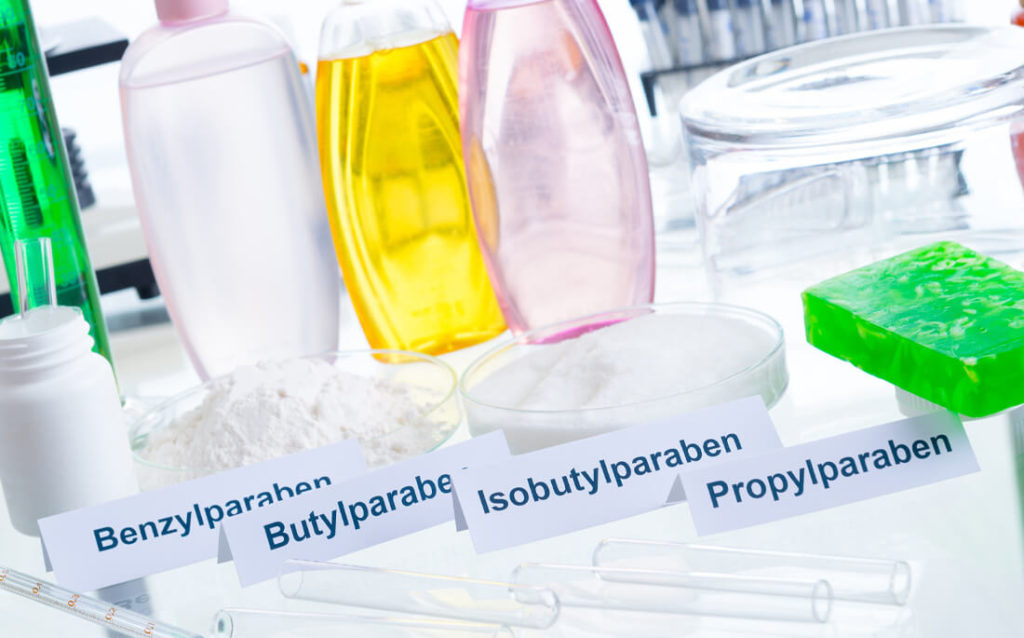
Even the FDA admits that parabens act like estrogen inside the body, which can trigger the growth of hormone-related cancers, including those of the breast and skin. Parabens may also decrease sperm count and trigger other developmental and reproductive problems in both men and women.
Triclosan
The word “anti-bacterial” has been ingrained into many people’s minds as always being a good thing. But this designator on personal care products usually means that they contain a chemical additive known as triclosan that’s capable of passing directly through the skin barrier and into your body, where it proceeds to wreak havoc on your endocrine system, including your thyroid. Like parabens, triclosan mimics estrogen inside the body, which is why the Canadian Medical Association has called for a blanket ban on its use in consumer products.
In addition to interfering with natural hormone expression and normal breast development in women, triclosan has also been linked to bacterial resistance. Thankfully, the FDA now admits that triclosan provides no benefit to humans, though the agency continues to allow its use in consumer products – which is why it’s up to you to carefully read ingredient labels and product packaging to avoid it.
Vitamin A
You’re probably thinking, wait a minute, isn’t vitamin A a good thing? The simple answer is: not when it’s applied to your skin. When they interact with natural sunlight, vitamin A derivatives like retinyl palmitate, retinol, and retinyl acetate can actually damage your skin, increasing your risk of developing skin tumors or lesions. Vitamin A is meant to be ingested as an antioxidant, not applied to the skin, and should thus be considered as yet another toxic skincare ingredient to avoid. m, or face oil, that your body produces.
Oxybenzone
A common chemical filtering agent, oxybenzone is a staple in sunscreens and many other skincare products, intended to protect against ultraviolet (UV) damage. But it’s also a known hormone disruptor that can damage the reproductive system and interfere with healthy thyroid function. Oxybenzone has also been linked to skin allergies, male infertility, and hormone-related cancers in both men and women.
The state of Hawaii actually implemented a ban on both the sale and distribution of sunscreen products containing oxybenzone because of the chemical’s dangers, which are especially accentuated when oxybenzone is combined with other ingredients known as “penetration enhancers” that accelerate its absorption into the skin.
Polyethylene glycol (PEG)
Typically used as a thickening agent, polyethylene glycol (PEG), as well as the entire family of related PEG compounds, is often contaminated with toxic byproducts like ethylene oxide, a known carcinogen. PEGs are also notorious for containing 1,4-dioxane, a persistent toxin that’s been linked to respiratory illness, as well as declared by the Environmental Protection Agency (EPA) to be a “probable human carcinogen.”
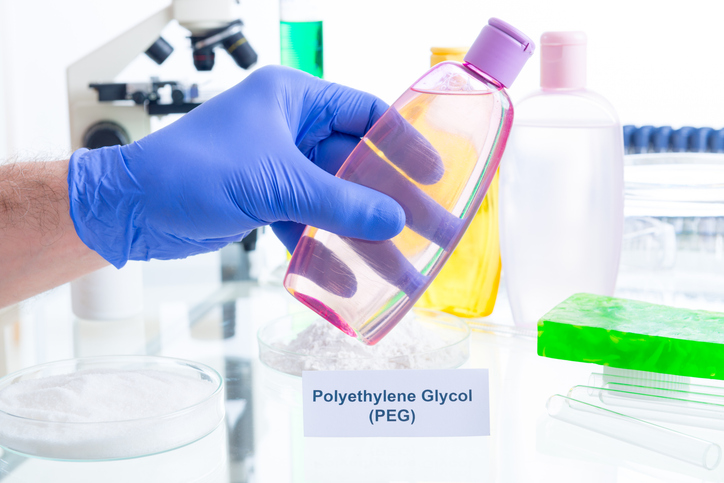
Formaldehyde
More familiarly known as rat poison, formaldehyde is used in various skincare products, including baby bath soap, as a preservative. But the chemical and its many derivatives are not something you want on your skin. The American Contact Dermatitis Society (ACDS) awarded formaldehyde its 2015 Contact Allergen of the Year due to the irritation it can cause to the eyes, nose, throat, and skin. Formaldehyde is also linked to immune system toxicity, respiratory irritation, and cancer.
Formaldehyde isn’t always specifically listed on ingredient labels, and can actually be released by other common skincare ingredients like DMDM hydantoin, diazolidinyl urea, imidazolidinyl urea, methenamine, quaternium-15, and sodium hydroxymethylglycinate, all of which you’ll want to avoid.
Isothiazolinones
This synthetic line of biocide preservatives is used in both skin and hair care products to keep their ingredients “fresh.” You can spot isothiazolinones under names like methylisothiazolinone (MI/MIT), methylchloroisothiazolinone (MCI), and benzisothiazolinone (BIT), and EWG warns that they all have the potential to cause skin irritation. Studies are also finding that isothiazolinone chemicals are major culprits in the current epidemic of allergic contact dermatitis.
Be warned that just because a product is labeled as “hypoallergenic,” “gentle,” or “sensitive”–this also includes products labeled as “organic” and “100% natural” as well–doesn’t mean that it’s free of isothiazolinones. In fact, a study conducted by ACDS found that, among the 4,660 consumer products it tested, all but one of them contained M.I. specifically.
Petrolatum (and other petroleum distillates)
The primary ingredient in Vaseline, petrolatum is a gel-like substance derived from petroleum that many manufacturers use as a cheap filler to make their skincare products feel more moisturizing. But petrolatum and other petroleum distillates are problematic in that they remain on the surface of the skin rather than absorb into it, effectively suffocating the skin and preventing natural moisture from passing into the body from the atmosphere.

Petrolatum also blocks oxygen from absorbing into the skin, which can also aggravate skin conditions like acne. Once your body becomes accustomed to this, it consequently becomes increasingly less efficient at naturally moisturizing your skin, not to mention the fact that its presence blocks your skin’s normal detoxification pathways.
Petrolatum also sometimes contains trace amounts of polycyclic aromatic hydrocarbons (PAHs), a class of organic compounds that’s been identified as being a probable human carcinogen. Studies have further shown that petroleum byproducts tend to accumulate inside the body, including in breast tumors.
Sulfates (and their byproducts)
Sulfate surfactants like sodium lauryl sulfate and sodium laureth sulfate are staple ingredients in many skincare products due to their ability to attract both oil and water, making them effective cleansing detergents. But these foaming agents are often contaminated with ethylene oxide, a carcinogenic chemical that can damage the eyes. Contamination with 1,4-dioxane is another problem with sulfates, as are their nitrosamine byproducts, upwards of 90 percent of which have been identified as being cancer-causing.
DEA compounds (diethanolamine)
These skin irritants are commonly used in cosmetic and skincare products to make them creamier and more sudsy. But they do this at a potential price: liver cancer, not to mention all sorts of other pre-cancerous changes in the skin and thyroid. DEAs are also hormone disruptors that can deplete the brain of choline, which is needed by the body for healthy brain development.
Phthalates
Of all the toxic chemicals in skincare products, phthalates are a top contender for being the most toxic ingredient to avoid in skincare. Phthalates are so sinister, in fact, that they mimic the natural hormone estrogen, potentially throwing the endocrine system completely out of whack–especially in men, in whom phthalates directly target testosterone for destruction.
Among the most common phthalates to look out for include di-n-butyl phthalate (DBP), diethyl phthalate (DEP), dimethyl phthalate (DMP), di-2-ethylhexyl (DEHP), and benzylbutyl phthalate (BzBP), all of which negatively interact with both the endocrine and central nervous systems.
Butylated hydroxyanisole (BHA) and butylated hydroxytoluene (BHT)
Another type of chemical preservative, BHA, has been dubbed by the National Toxicology Program (NTP) as “reasonably anticipated to be a human carcinogen.” BHA can also remove the pigment from your skin, believe it or not, as well as damage your liver. Studies show that it can cause cancers of the stomach like papillomas and carcinomas, as well as interfere with thyroid hormone levels, impairing healthy reproduction.

In the European Union (EU), BHA is prohibited from use in “fragrances” – and since BHT is closely related to BHA, it poses these same risks.
Polycyclic aromatic hydrocarbons (PAHs)
Derived from coal tar, crude oil, and/or gasoline, PAHs are chemical dying agents typically found in hair care products. But they really shouldn’t be there, seeing as how tests conducted by the U.S. National Cancer Institute (NCI), in conjunction with the NTP, found that they’re carcinogenic. PAHs may also contain toxic heavy metals as well as aluminum, a known neurotoxin.
Siloxanes
Derived from silicone, siloxanes are a family of chemicals used in many skin and hair care products to make them easier to apply, as well as quicker to dry. Moisturizing skincare products often contain siloxanes as well, since they help to make the skin feel softer and smoother. But there are many health risks that come with their use, including endocrine disruption, reproductive damage, and cancer.
Research shows that siloxanes have the potential to damage the nervous system by interfering with neurotransmitter function. Siloxanes are also highly resistant to degradation, meaning they persist inside the body, as well as in the natural environment.
So How Can You Find Skincare Products You Can Trust?
With all these toxic ingredients out there, you may be asking yourself: “Is there a way I can avoid damaging my skin with the products I’m supposed to be using to care for it?”
Fortunately, the answer is “Yes.” AnnieMak Clean Skincare was founded on the principle that the products you place on your skin every day should be ones you can trust. That’s why all our skincare products are free from these 15 Toxic Ingredients – and free from all GMOs, pesticides, herbicides, heavy metals and other damaging substances.
And we’re proud to prove it… we’re one of the few skincare companies that has all our product third-party tested for levels of potentially harmful chemicals… and publishes the results on our website for you to see. We want you to know that when you buy AnnieMak Clean Skincare… you’re really getting products that are absolutely free of the kind of harmful chemicals so many other companies are using.
Wrapping It Up!
Most skincare products on the market today are loaded with toxic ingredients and chemicals that are harmful for your skin.
Because government bodies like the FDA have banned so few of these toxic ingredients from skincare products, it’s vital that you watch out for them by reading skincare product labels carefully.
There are 15 common toxic ingredients that you should always avoid in your skincare products, including:
Fragrance
Parabens
Triclosan
Vitamin A
Oxybenzone
Polyethylene glycol (PEGs)
Formaldehyde
Isothiazolinones
Petrolatum (and other petroleum distillates)
Sulfates (and their byproducts)
DEA compounds (diethanolamine)
Phthalates
Butylated hydroxyanisole (BHA) and butylated hydroxytoluene (BHT)
Polycyclic aromatic hydrocarbons (PAHs)
Siloxanes
AnnieMak Clean Skincare was founded on the principle that all products you put on your skin should be free from toxic ingredients. That’s why we have all our products tested by 3rd-party labs and are proud to show they’re free of GMOs, pesticides, herbicides, and all of these common toxic ingredients. Try them today and see the difference truly clean skincare can make for your skin!

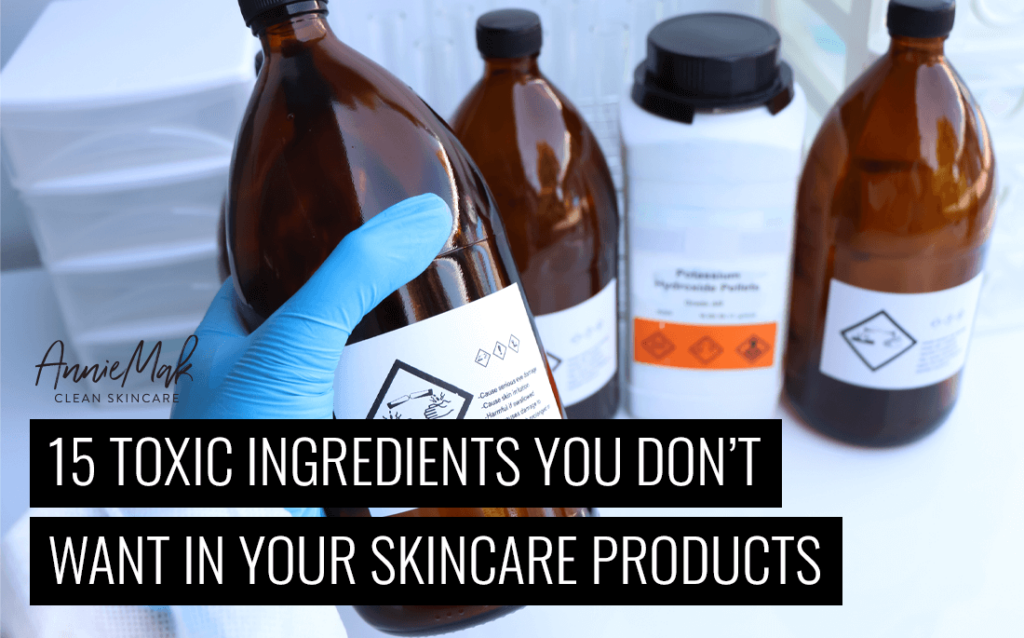



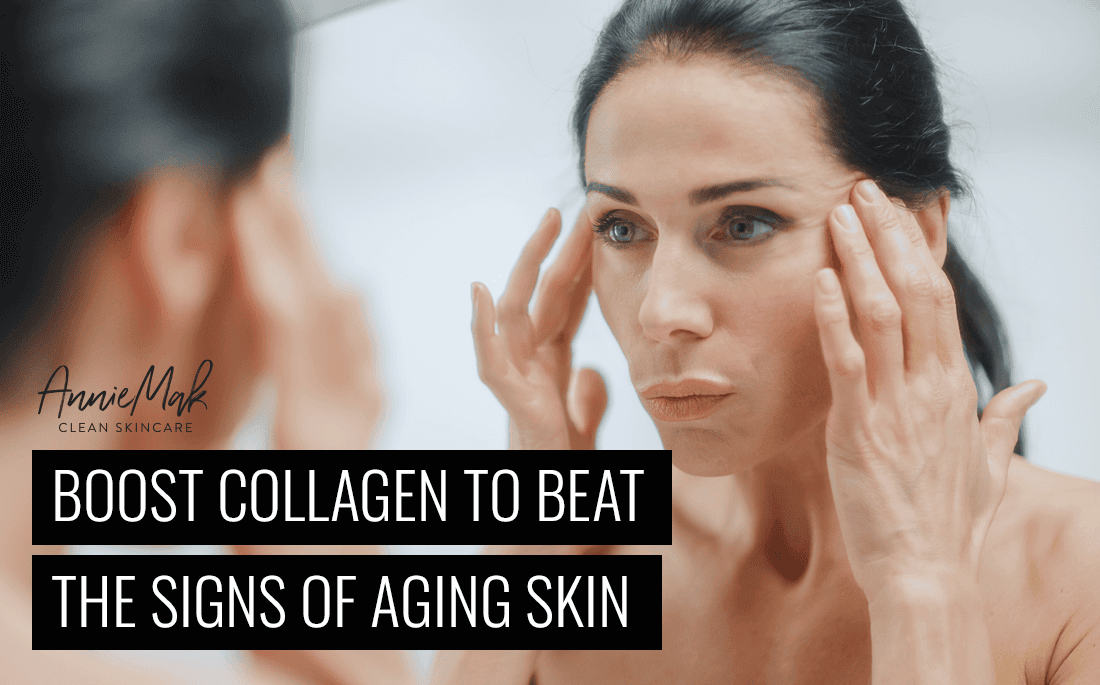
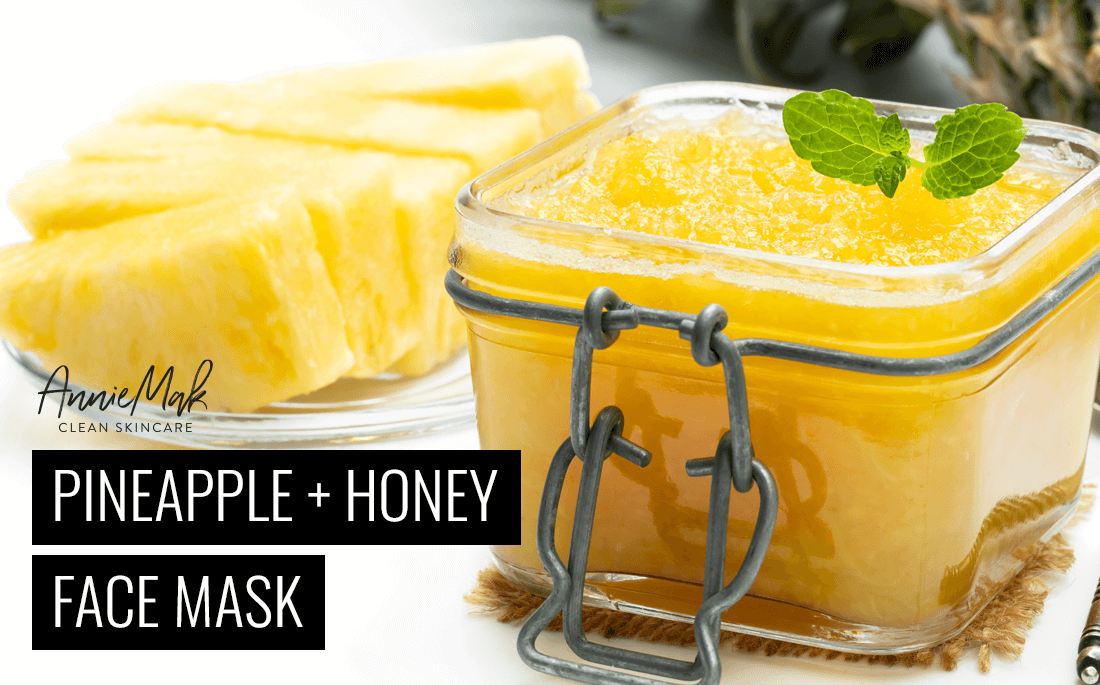
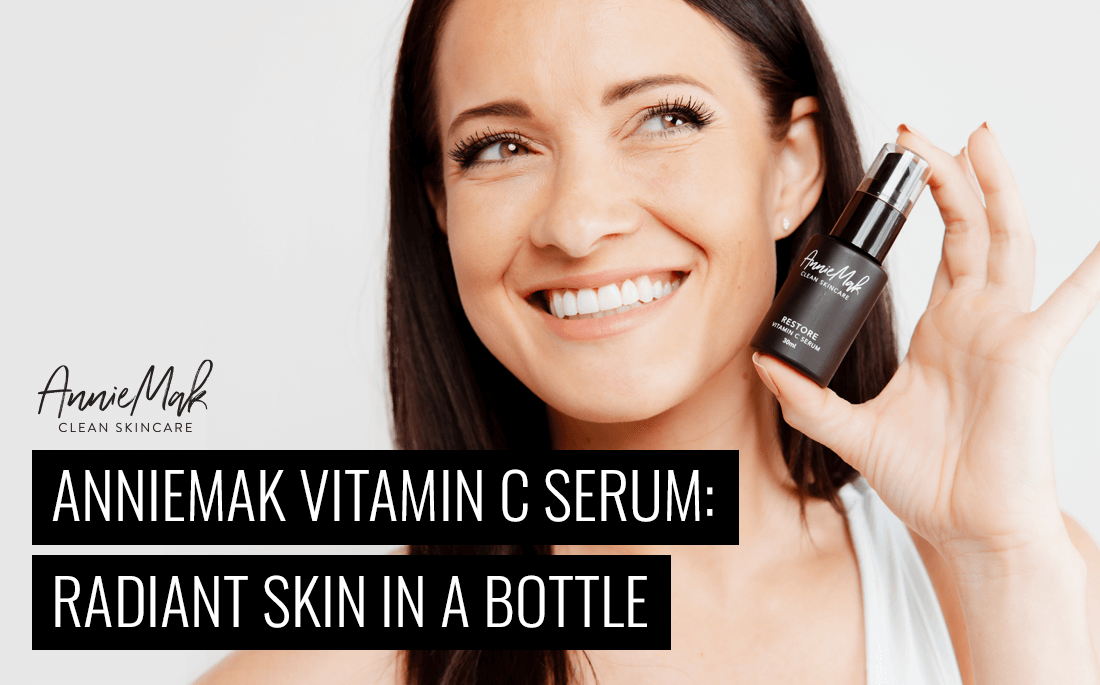
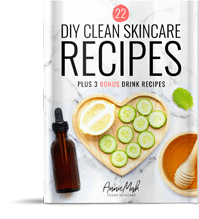
Leave a Reply